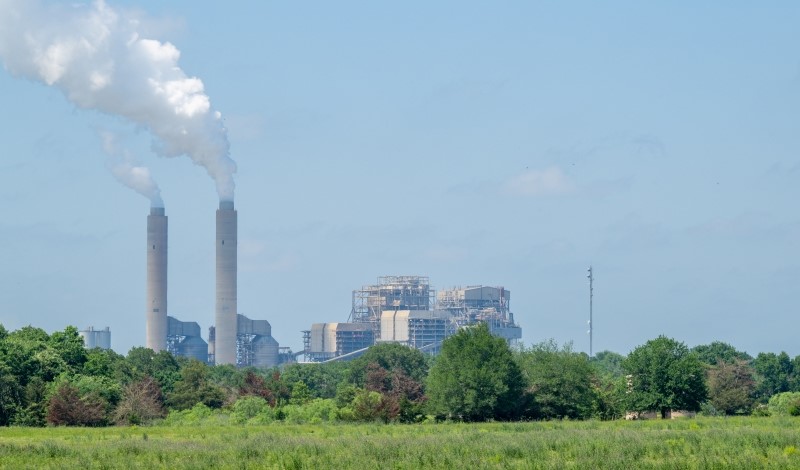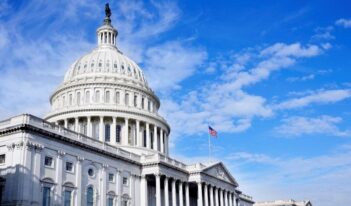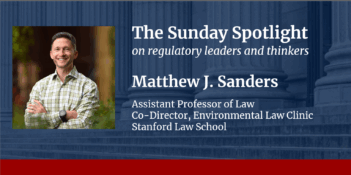
The Court stayed the “good neighbor” provision of the Clean Air Act in Ohio v. Environmental Protection Agency.
The Supreme Court’s freewheeling interventions into ongoing proceedings in the lower courts have sparked fierce debate. A recent case, Ohio v. EPA, illustrates one of the pitfalls for the Court itself: the risk that after devoting months of attention to a stay request, there will turn out to be nothing much there. What follows is a detailed review of the process, showing how the grounds for a possible stay steadily shrank until only the barest excuse for a stay remained.
The process leading to the ruling began with EPA’s issuance of a regulation dealing with interstate air pollution. The “good neighbor” provision of the Clean Air Act requires EPA to intervene when pollution from upwind states prevents downwind states from achieving federally mandated air quality standards. On June 5, 2023, EPA published such a rule, which covered 23 upwind states. About half of the upwind states rushed to their local courts of appeals and obtained stays against applying the rule to them, based largely on the claim that EPA had improperly rejected the plans those states had filed for reducing their interstate emissions and had jumped the gun by issuing its own plan. In the meantime, the states and some industries challenged the rule directly in the U.S. Court of Appeals for the D.C. Circuit, which refused their request to stay the rule.
On October 13, 2023, several states that were still covered by the rule submitted an “Emergency Application for a Stay” of EPA’s rule to the Supreme Court. The core of their challenge to EPA, they said, was that “the EPA failed to consider a relevant factor during its decision making: namely, the numerous and obvious flaws in its decisions to disapprove state-implementation plans.” The root cause was EPA’s entire approach, specifically its failure “to grapple with the regulatory mess it created when it took a combined regulatory action against more than 20 different states; and then forced them to accept a single, coordinated federal plan.” Thus, according to the states, “EPA’s desire to force a square peg (a federal air-quality plan) into a round hole (a cooperative, state-driven system) was always going to be a poor fit.” In short, the EPA rule was defective to the core.
The Court waited over two months before taking any action on the “emergency” stay request. It then set the case for oral argument on February 21, 2024, almost four months after the stay request came in. It asked the parties to address “whether the emissions controls imposed by the rule are reasonable regardless of the number of States subject to the rule.”
Almost five months passed before the Court ruled on the stay, almost eight months after the stay request—some emergency! In an opinion by Justice Neil Gorsuch, a narrowly divided Court granted the stay. But the Court did not endorse the states’ theory that EPA’s whole approach in issuing a multistate plan was fundamentally flawed. Nor did the Court address the question it asked the parties to discuss: whether the emissions controls demanded by EPA were reasonable regardless of the number of states in the plan.
Instead, its ruling was based on a narrow technical argument: that EPA had failed to clarify, in response to comments submitted during the rulemaking, whether the EPA’s emission controls were based on nationwide data or state-specific data or assumed that all 23 states would be part of the plan. As Justice Amy Coney Barrett’s dissent points out, it is debatable whether the comments did raise this issue with reasonable specificity, as required by the Clean Air Act.
There are also indications that EPA did use nationwide data about industry costs, which would have made the comments basically irrelevant. In response, the Court said essentially that (1) the government had declined to say at oral argument that it was “certain” EPA would have imposed the same standard regardless of what states were covered, and (2) anyway, the government had not raised the argument clearly enough in its filings. The Court’s forgiving attitude toward the vagueness of comments in the rulemaking seems a bit at odds with its stingy reading of the government’s statements. But never mind.
One can quibble with parts of Justice Barrett’s dissent, but it is hard to argue with her conclusion that the stay was “based on an underdeveloped theory that is unlikely to succeed on the merits,” and, furthermore, that the Court had granted “emergency relief in a fact-intensive and highly technical case without fully engaging with both the relevant law and the voluminous record.”
In short, the states launched a broadside attack on EPA’s entire approach to the rule, but the Court’s ultimate, much delayed ruling, could only find one narrow flaw in the EPA’s rulemaking process that might, or might not, have made the slightest difference to EPA’s decision. It is almost as if the Court failed to buy the states’ original argument but felt too embarrassed, after putting the parties through months of delay, to simply say: “Never mind, we thought this rule might be deeply flawed, but actually there are just routine technical issues for the lower court to decide.”
If EPA’s calculations did actually rest on the assumption that every single state covered by the rulemaking would be part of the ultimate plan, then it will face a serious problem in the lower court. But that would have been a foolhardy assumption for EPA to make, because it already had experience with efforts by individual states to exempt themselves from earlier interstate rules (and Texas had succeeded in doing so). The much more likely scenario is that the D.C. Circuit will find, after digging into the record, that Justice Barrett was right—that the whole issue was much ado about nothing given the actual methodology used by EPA.
If that does happen, there will be no reason for the D.C. Circuit to set aside the rule. Unlike the Administrative Procedure Act, which says that a court “shall” hold unlawful a rule that is arbitrary and capricious, the Clean Air Act pointedly says that the court “may” reverse such a rule. As Justice Barrett points out, there is other language in the Clean Air Act that is even clearer about leaving rules stand unless there is good reason to vacate them, beyond technicalities. There is some dispute about whether that language would apply, but the “may reverse” language is clear enough on its own.
The difference between “shall” and “may” is drilled into every lawyer. Even under the Administrative Procedure Act, it is arguable that a court has the power to leave a rule in place while obtaining a clearer explanation from an agency (a “remand without vacatur”). But the language of the Clean Air Act is crystal clear about a court’s discretion to leave a rule standing. If EPA’s reasoning in setting limits for individual states did not actually depend on how many states were participating, its failure to clarify this in the first place would be an idiotic reason for vacating the rule.
With luck, the Court will learn its lesson about the limits of its ability to assess complex regulatory cases without the assistance of opinions from the lower courts. There is a reason for the traditional norm of waiting until the lower court process is complete before jumping headlong into such cases. Unlike the other members of the conservative block, Justice Barrett seems to have figured that out. Let us hope at least one or two others have learned from this experience. If the Court plans to decide every significant regulatory case de novo, it is not going to have time for much else.
This essay is part of a series, titled The Supreme Court’s 2023-2024 Regulatory Term.




